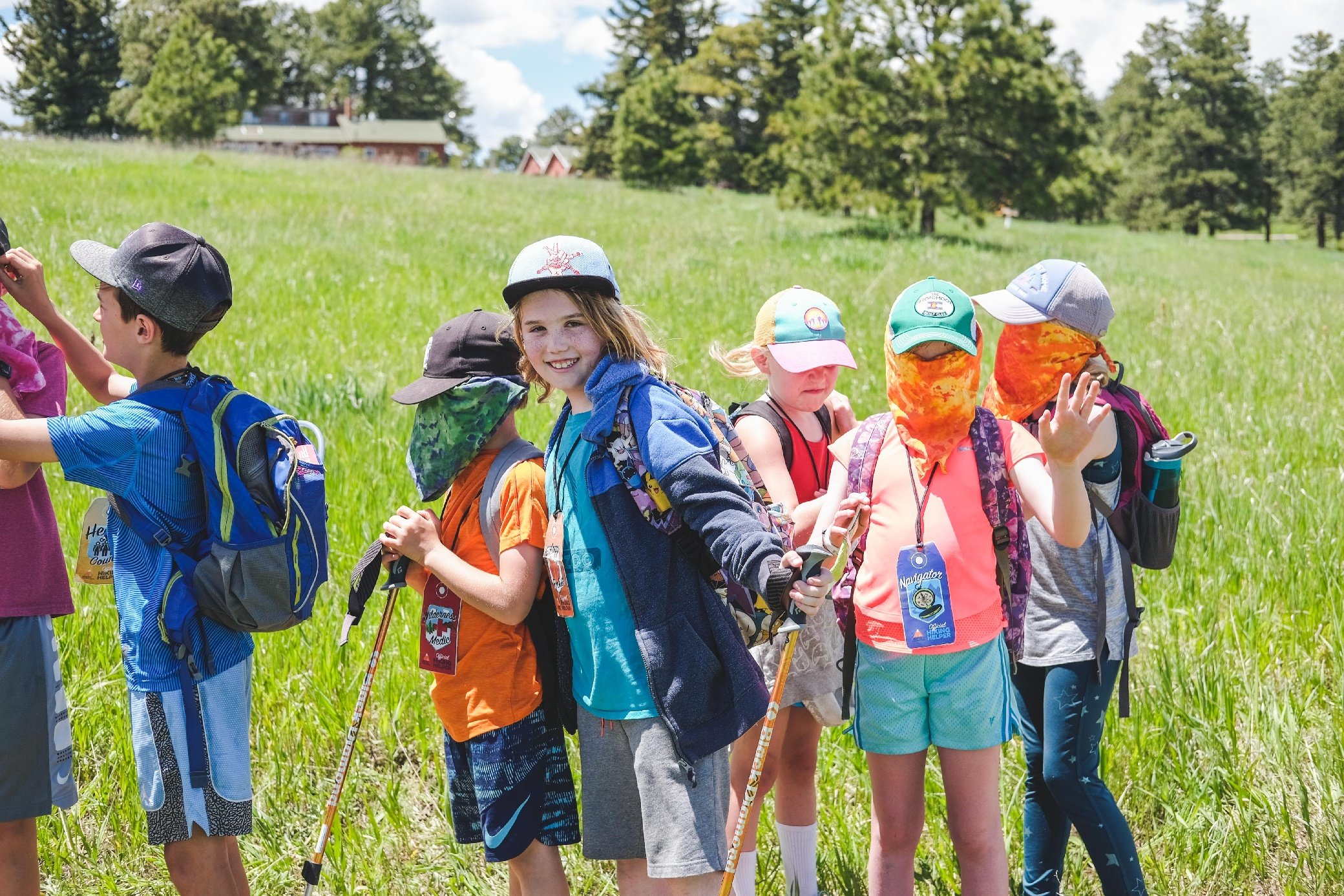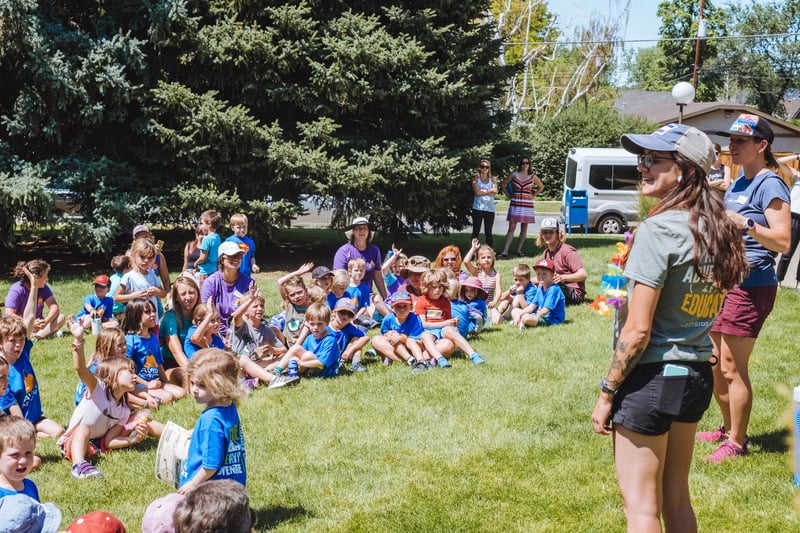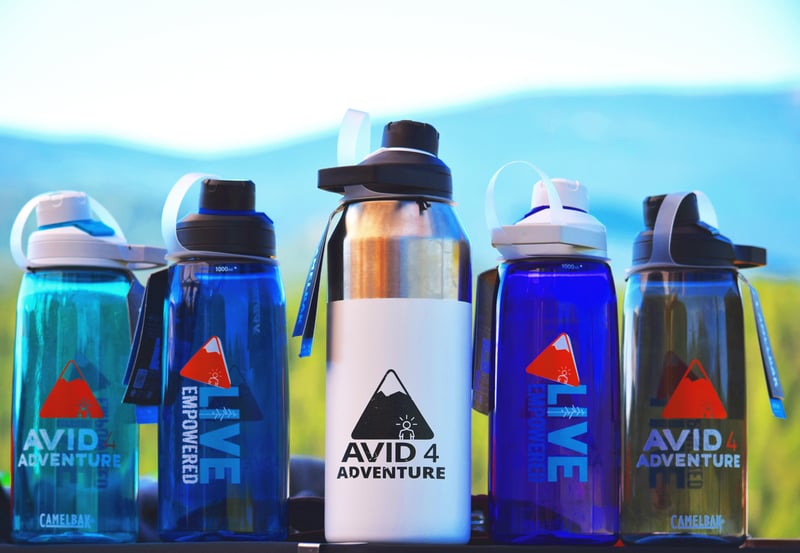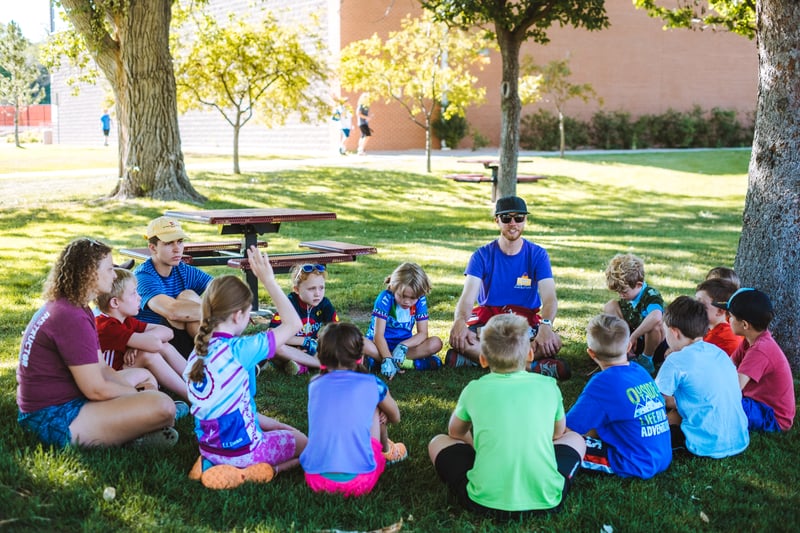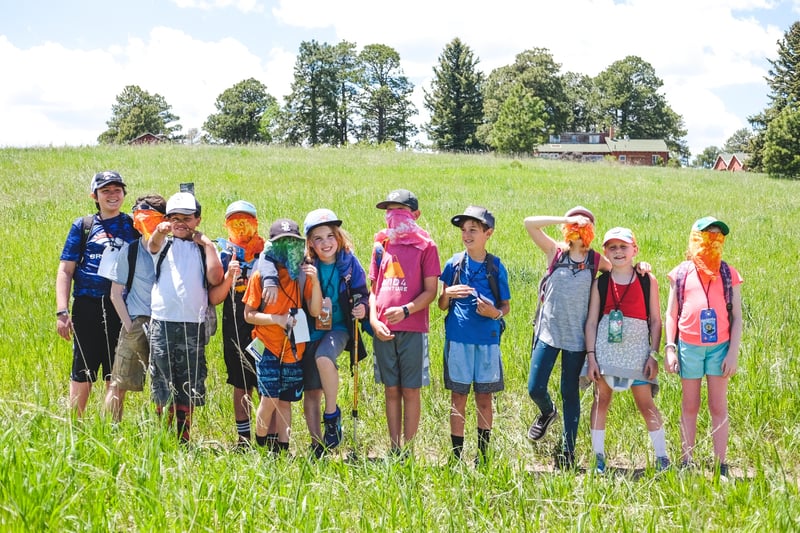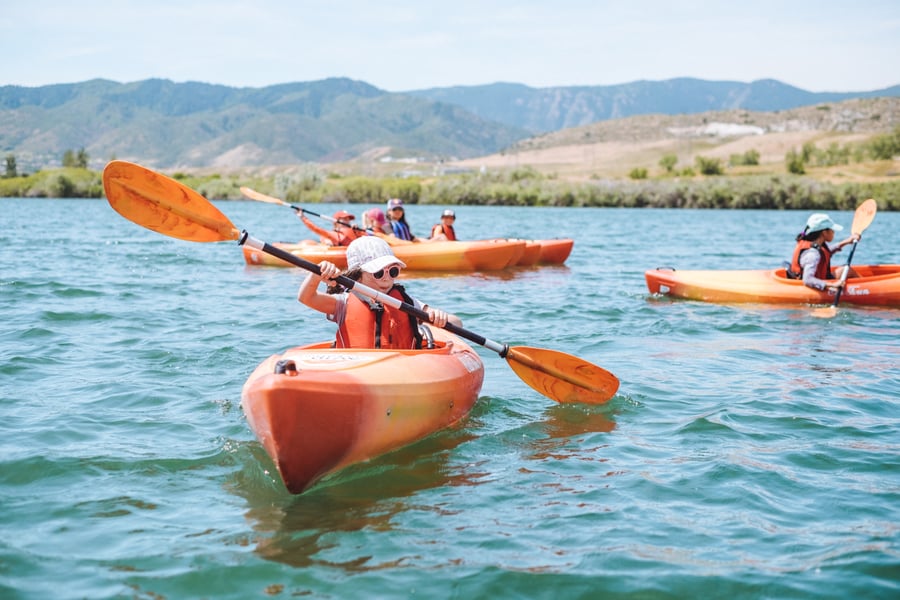Have any of you Avid4 Adventure parents or guardians ever wished you could be a fly on the wall (or tree) during some camp antics? Or maybe during the year your kids are begging you to play that one really awesome game they learned at camp, but they can’t quite remember how it works? To help you spark some of that summer camp excitement amidst these winter doldrums here are 8 quick and (fairly) easy games you can play. Many of them present some great leadership, communication, and team building opportunities as well! Have fun, stay safe, and always remember to protect your pebble (keep reading…that will make sense in a minute).
1. What’s Different?
Materials:
Whatever you’re wearing, or whatever random objects are lying around
How to Play:
Gather a group of kiddos and/or adults. One person starts by standing in front of the group, and for 30 seconds, everyone observes what they are wearing. Then, that person goes briefly out of sight and changes something about their appearance (hairdo, the way they pulled up their socks, which sleeve is rolled up etc.) that is readily visible, but sneaky. The rest of the group must figure out what’s different, and whoever gets it first is the next one up.
Notes:
If you want to make it a bit harder, you can have the person change a greater number of things about their appearance. You can also have several people go up in front of the group at once. Alternatively, rather than having people change something, you can gather some readily available items (water bottles, sunglasses, mittens), arrange them in front of the group, give everyone 1 minute to memorize the items, and then while their backs are turned you move or take away a specified number of things.
2. Magic Unicorn Bucket
Materials:
A recycled container (large yogurt containers work well), a small object that fits in the container (the unicorn), 4-5 colors of sharpie or duct tape in 4-5 different colors
Set Up:
To create your Magic Unicorn Bucket, using sharpies or duct tape mark off 4-5 bands that wrap all the way around your container of choice. Then label each color band on the bucket with a body part such as hands, elbows, legs, feet, etc. (this can be left up to whomever is making the bucket, but I would suggest reading the "How to Play" section before deciding on the body parts!).
How to Play:
Each band (and corresponding body part) on the bucket represents a different challenge and dictates which body part the participants can use while passing the bucket around the circle from one person to the next. The Unicorn that lives in the Magic Bucket must make a complete loop around the circle, from the first person to the last person, while safely staying inside her bucket house. For example, if you decide to play the ‘red band’ which says ‘feet’, every person in the circle may only touch the bucket with their feet while passing it around the circle. If at any point the Unicorn falls out of her bucket, the challenge resets.
Notes:
I recommend, at least the very first time you play, starting with whichever color band is labeled ‘hands’ before moving on to more challenging body parts. This game is great for learning teamwork and usually induces a large amount of laughter!
3. Where’s My Dragon Egg?
Materials:
Any object roughly the size of a water bottle (stuffed animals are great, as are Nalgene-sized water bottles)
Set Up:
To play this game you need a fairly open area, about 40ft long
How To Play:
One person – we’ll call them ‘The Protector’ – walks to one end of the playing area with the ‘egg’ (the water bottle, stuffed animal, or whatever object you decide to use), puts it down behind them at their feet and then faces away from the rest of the group who stays at the other end of the playing area. The first portion of this game works just like Red Light, Green Light. The Protector faces away from everyone while they yell ‘Where’s my dragon egg?’. While The Protector is yelling this, the rest of the group creeps up to them but must stop moving as soon as they finish yelling and turn back around. If The Protector sees anyone still moving at this point, they are called out and go back to the starting line. The game continues like this until everyone has gotten close enough to The Protector to touch the egg with one finger. Only once every player has touched the egg is the group free to pick it up and attempt to bring it back to the starting line. At this point, every time The Protector turns to yell “Where’s my dragon egg?”, the group tries to move the egg closer to the starting line, and then attempts to hide it from view when The Protector spins to face them. The protector has 3 chances to guess who is hiding the egg before the group gets it back to the start.
Notes:
This game requires a deceptively large amount of strategy and teamwork to complete successfully.
4. Zen Counting
Materials:
None!
Set Up:
Form a circle (or, to make the game more challenging, have everyone gather in the same area but don't form a circle)
How to Play:
The goal of this game is for the group to count to 20. There are only 3 rules:
- Every person must say at least one number
- Only one person can say a number at a time
- No other talking is allowed
That’s it! Every time one of these rules is broken, the group starts over at 1. If you make it to 20, see if you can keep going!
Notes:
This game is deceptively tough. What the group will quickly find is that they have to create a system for who says a number when, otherwise two or three people will usually say a number aloud together. But, they have to work out this system without talking.
5. Beast Master
Materials:
None
Set Up:
None
How to Play:
Together, the group decides on three animals, and corresponding body poses. For example, you might have elephant (create a trunk with your arms), eagle (flap your arms like you’re flying), and frog (crouch down like you’re about to hop). One person starts as the Beast Master and goes up to the front of the group where they can be seen by everyone else. The Beast Master counts “1, 2, 3” and then strikes the pose of either the elephant, eagle, or frog on “3” at the same time that everyone else in the group also strikes a pose. If anyone chose to be the same animal as the Beast Master, they are out and sit down. The game continues until only one person is left; they become the next Beast Master
6. Mine Field
Materials:
A plethora of small, soft objects, a.k.a “mines” (e.g. balled-up bandanas, soft balls, plastic bottles, backpacks) and blindfolds
Set Up:
Set up the boundaries for your ‘mine field’. Ideally you will have a fairly large, open, empty space to play this game. Once you have created boundaries, scatter the ‘mines’ throughout the field.
How to Play:
Divide your group into pairs (depending on the group, you may want to pick the pairs beforehand). Let them know that one person will be blindfolded and one will not (emphasize that no one has to be blindfolded if they don’t want to!). The goal of this game is for the blindfolded player to make it safely from one side of the mine field to the other, while being guided by the words of their partner, and without contacting any of the objects in their way. The seeing player can use any form of verbal communication they wish to guide their partner; the blindfolded player may only listen – no talking! You can suggest that teams create their own unique communication system. Or, you can let them try the first round without any hints, debrief what could be improved once they complete it, and then give them a chance to refine their strategy before they switch roles. As a group, you can decide on a penalty for the pair if a mine is touched (e.g. a time penalty or starting over at the beginning).
For an added challenge, you can play this game in groups of 3 where one person is still blindfolded but they must be guided by a person whose back is now turned from the minefield course. This person can talk but they can't see the course. The third person, facing the person whose back is turned, can see the minefield course and their blindfolded partner but can't talk. Together they have to come up with a plan to get their partner through the course to the other side without touching any mines.
Notes:
This is an excellent activity to hone communication and teamwork skills. It does come with inherent risks, so before beginning be sure to create a safe space for everyone involved and discuss what would help the blindfolded person feel comfortable. It is less of a race and more of a completion challenge. Lastly, as the facilitator, you should remain inside the mine field during play; don’t hesitate to gently intervene if collisions between players become imminent.
7. Flinch
Materials:
A soft, throw-able object, ideally a ball
Set Up:
Form a circle
How to Play:
One person from the group stands in the middle of the circle with the ball. They are the “Flinch Master”. Their goal is to get as many people from the group ‘out’ as possible. To get someone out, the Flinch Master pretends to throw the ball at someone. If they flinch in response, that person is out and sits down in the circle. If the “Flinch Master” decides to really throw the ball, the receiving person must catch it without letting it touch the ground. If they catch it successfully, they stay in, if not, they are out. The last person standing at the end becomes the next Flinch Master.
8. Protect Your Pebble
Materials:
Enough small rocks or pebbles for each person playing to have two
Set Up:
A fairly large, open space
How to Play:
Each player places one pebble on the back of each of their hands. Then, everyone tries to knock off other pebbles while protecting their own. If someone’s pebble is dismounted, they may continue protecting their other hand’s pebble. But, they cannot use the freed hand or arm and – if it seems like the group can handle it – you can give the option to use legs/feet instead.
Notes:
This game is a great one for getting some energy out in a focused way. That said, it also has the potential to get rowdy, so be sure that everyone understands the safety precautions before letting them loose!
Now you know a tiny fraction of the games we play at summer camp (we play so many, it was hard to pick just a few)! So your kiddo can play these and many more (like piano keys on kayaking day) check out our summer adventure camps where kids learn to rock climb, kayak, stand up paddleboard, bike, hike and more in the outdoors.





 Login
Login
 Store
Store
 Help Center
Help Center
